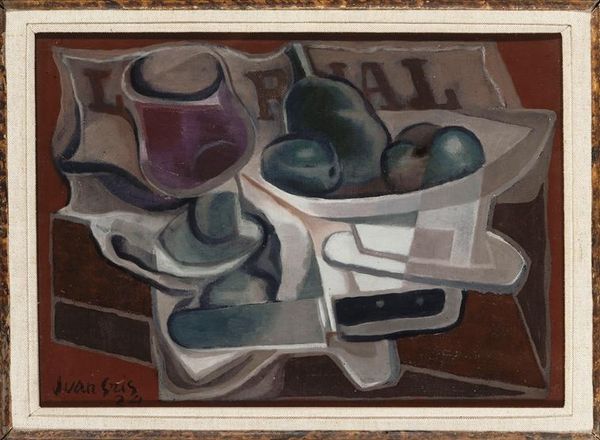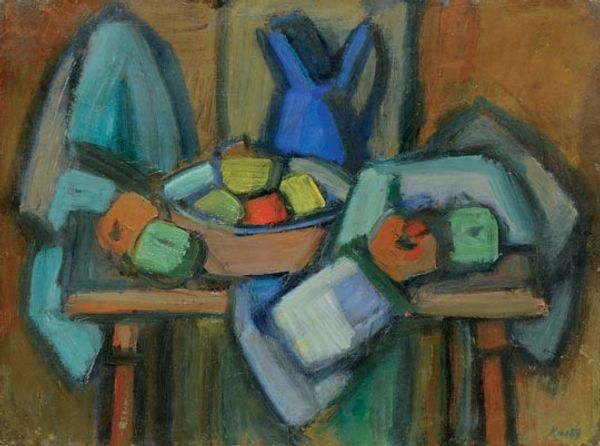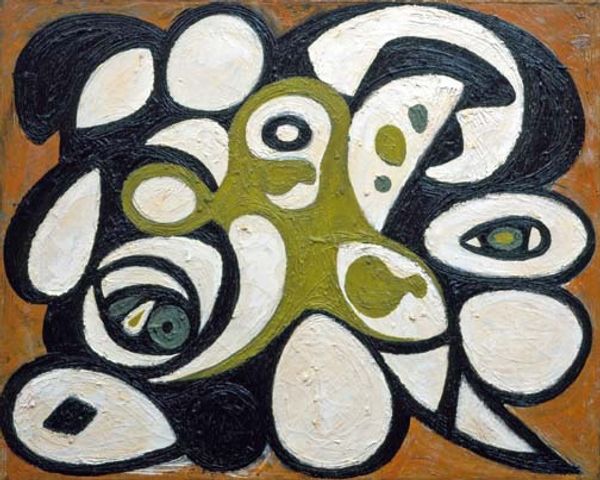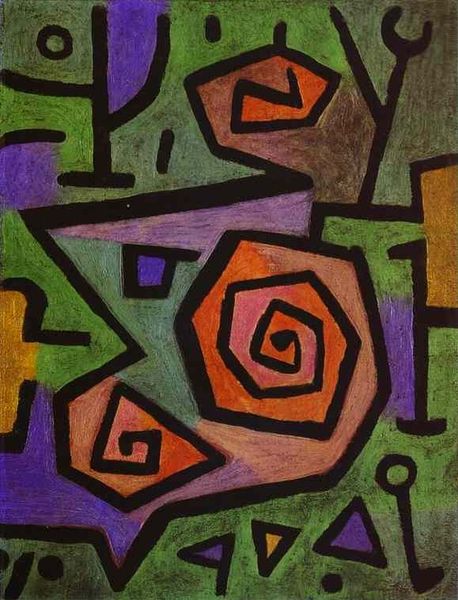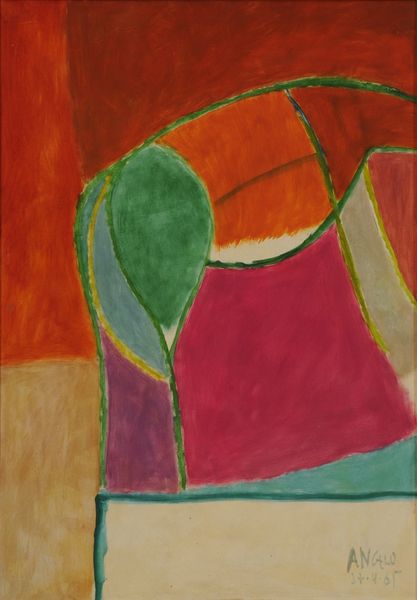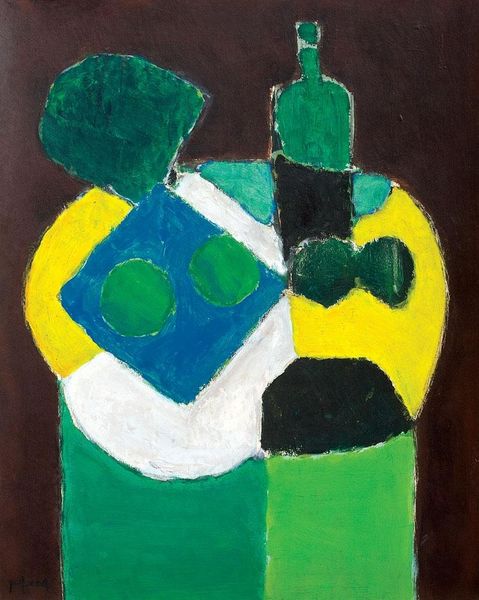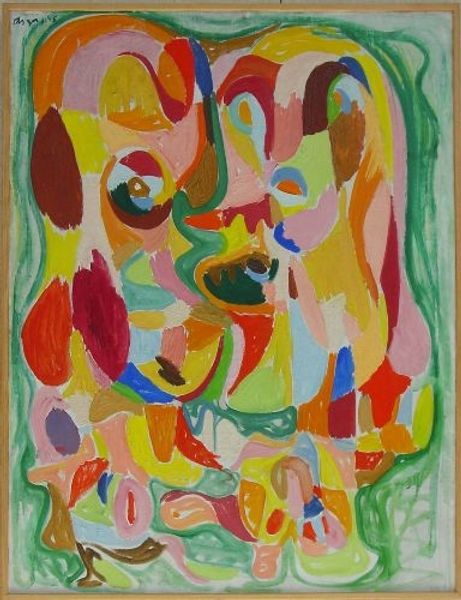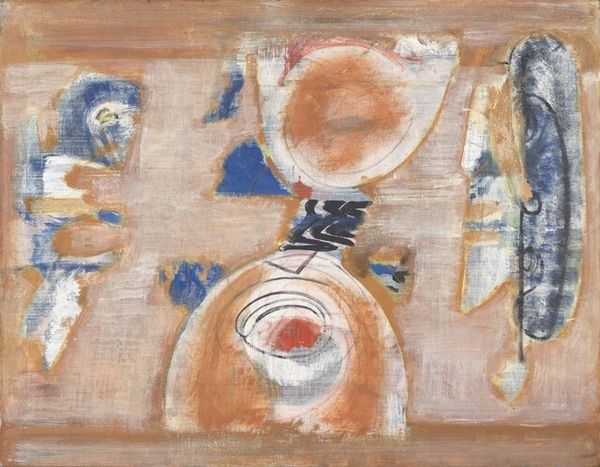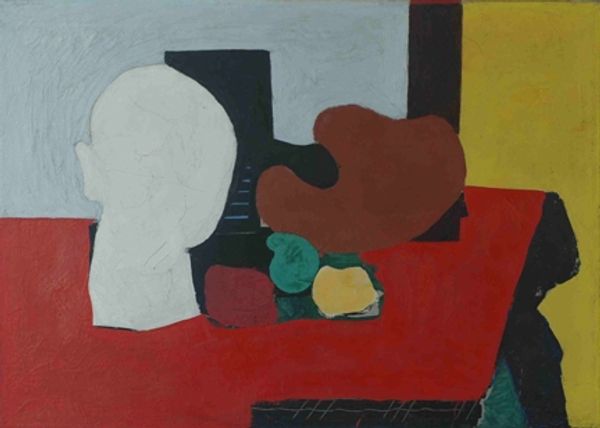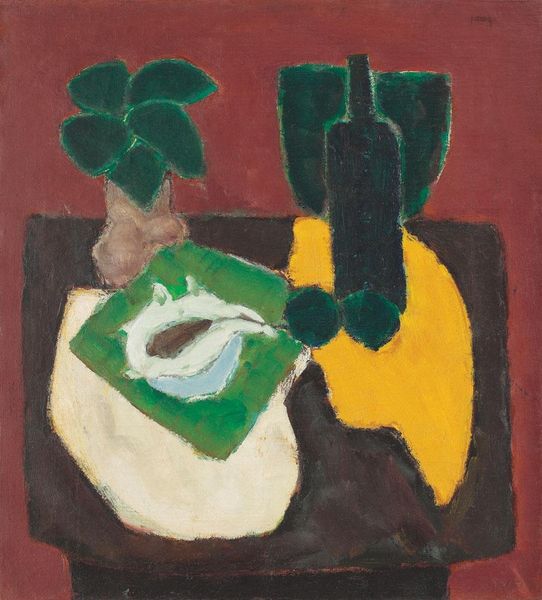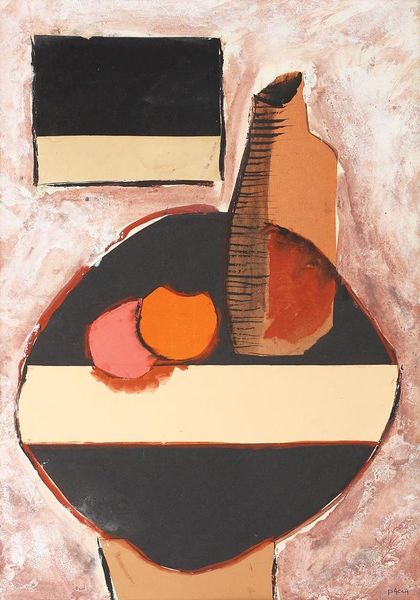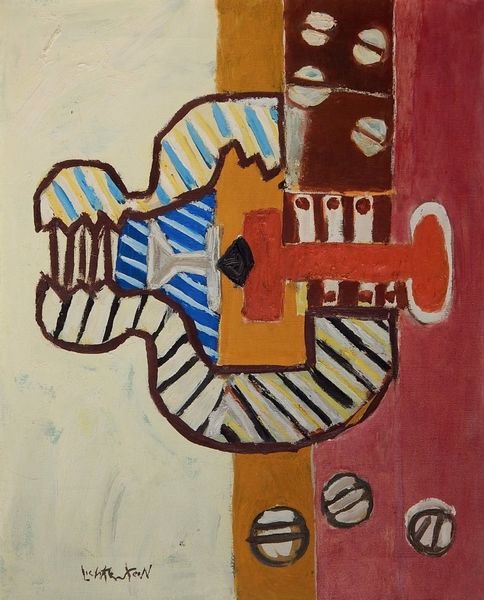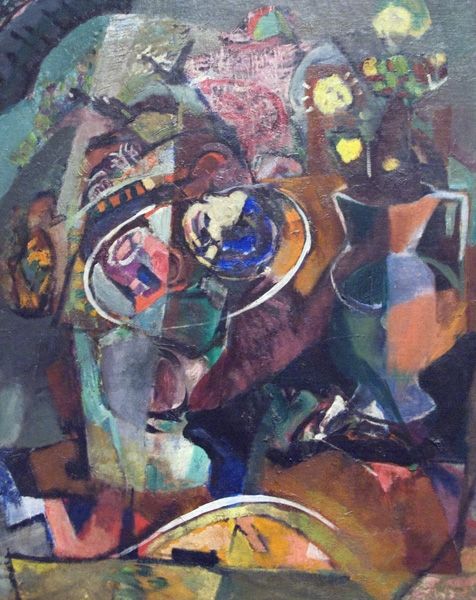
oil-paint
#
oil-paint
#
painted
#
oil painting
#
expressionism
Copyright: Public domain
Editor: Here we have "Džbán, hrnec a vejce," or "Pitcher, Pot, and Egg," a 1927 oil painting by Josef Capek. It's striking how simplified and elemental the forms are. What interpretations can we draw from its seemingly basic composition? Curator: The deceptive simplicity of Capek’s still life invites us to consider the social and political context of its creation. Painted in 1927, in the interwar period in Czechoslovakia, what dialogues can we begin surrounding a search for stability in a fractured society? Does the reduction of these everyday objects down to their most basic form – pitcher, pot, egg – perhaps echo a desire for a return to fundamentals? Editor: That’s a really interesting idea, thinking about a return to fundamentals. Do you think the starkness of the colors reinforces that feeling? Curator: Absolutely. Think about how the rough, almost childlike, rendering undermines traditional academic painting. Capek, along with his brother Karel, were key figures in Czech intellectual life. How might we connect this stylistic choice with a broader rejection of bourgeois values and a potential turn toward proletarian solidarity through art? Can we look into this conscious naivety in art and discuss themes related to class consciousness and societal upheaval? Editor: So it’s not just a simple still life, but almost a statement? Curator: Precisely. These choices reflect not just aesthetic preferences but a critical engagement with the social and political realities of the time. This allows for re-evaluating the painting not only as art, but also as social commentary. What kind of dialogue does it evoke about the relationship between artistic expression and political change? Editor: I never would have looked at this painting that way initially. Thanks for making me think about art as connected to everything that's going on around it! Curator: That's the beautiful thing about art, isn't it? It invites us to continually reconsider our place within these greater social fabrics.
Comments
No comments
Be the first to comment and join the conversation on the ultimate creative platform.
